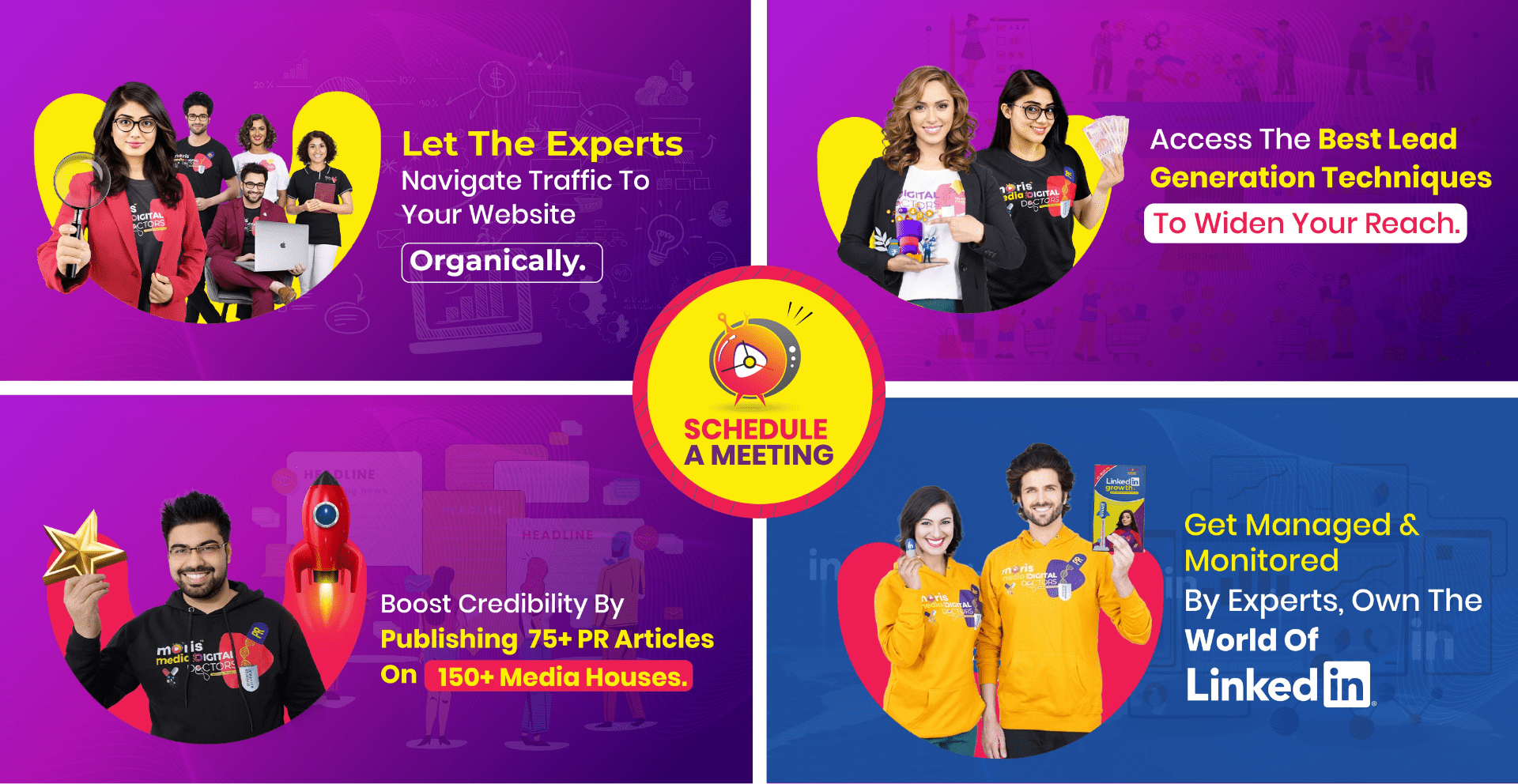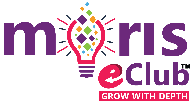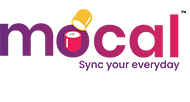Frequently Asked Questions
A lead magnet is an incentive or valuable offer that businesses provide to potential customers in exchange for their contact information, usually their email address. It is designed to attract leads and encourage them to take a specific action, such as subscribing to a newsletter, downloading a resource, or signing up for a free trial.
Lead magnets are typically digital assets or resources that address a specific problem or provide valuable information relevant to the target audience. Moris Media experts suggest some common examples:
eBooks or Whitepapers: Comprehensive guides or reports that provide in-depth information on a specific topic of interest to the target audience.
Templates or Toolkits: Ready-to-use templates, checklists, or toolkits that help users streamline their tasks or achieve specific goals.
Webinars or Online Courses: Live or pre-recorded webinars or online courses that offer valuable insights, training, or educational content.
Case Studies or Success Stories: Real-life examples or stories that showcase the success or positive outcomes achieved by using a product or service.
Exclusive Content or Access: Providing exclusive access to premium content, such as gated articles, videos, or research papers, that can only be accessed by providing contact information.
Free Trials or Samples: Offering a limited-time free trial or a sample of a product or service to allow potential customers to experience its benefits.
Quizzes or Assessments: Interactive quizzes or assessments that help users evaluate their knowledge, skills, or needs in a specific area.
Discounts or Coupons: Providing special discounts or coupons that can be redeemed for a purchase, encouraging potential customers to take action.
Lead magnets serve as valuable incentives that entice potential customers to share their contact information, enabling businesses to continue engaging with them and nurturing them through the sales funnel. They help build trust, establish credibility, and provide value upfront, increasing the likelihood of converting leads into paying customers.
Creating an effective lead magnet involves understanding your target audience, providing value, and aligning it with your business goals. Digital Doctors at Moris Media suggest the most effective steps to create an impactful lead magnet:
Identify Your Target Audience: Clearly define your target audience and understand their needs, challenges, and preferences. This will help you tailor your lead magnet to address their specific pain points or interests.
Choose a Relevant Topic: Select a topic that is closely related to your products or services and is of interest to your target audience. It should provide a solution, answer a common question, or offer valuable insights.
Provide Value: Ensure that your lead magnet offers significant value to the recipient. It should provide actionable information, practical tips, or exclusive access to resources that can genuinely benefit them.
Keep it Digestible: Make your lead magnet easy to consume and understand. Use clear and concise language, organize the information logically, and present it in a visually appealing format.
Showcase Expertise: Position yourself or your business as an authority by demonstrating your expertise in the chosen topic. Share valuable insights, industry data, or case studies that highlight your knowledge and credibility.
Make it Actionable: Provide actionable steps or recommendations that the recipient can implement right away. This helps them see immediate benefits and establishes a positive impression of your brand.
Optimize the Design: Pay attention to the design of your lead magnet. Use attention-grabbing headlines, appealing visuals, and consistent branding to make it visually appealing and professional.
Use a Strong Call-to-Action: Clearly communicate the next step you want the recipient to take after consuming the lead magnet. Include a compelling call-to-action that directs them to further engage with your brand, such as subscribing to your newsletter or contacting your sales team.
Contact Information: Integrate a lead capture form within the lead magnet to collect the recipient's contact information, usually their email address. Keep the form simple and ask for minimal details to reduce friction.
Test and Refine: Continuously test and refine your lead magnet based on feedback and performance metrics. Monitor engagement rates, conversion rates, and feedback from users to optimize its effectiveness.
You need to remember that an effective lead magnet should provide genuine value, address a specific need or problem, and be aligned with your overall marketing and business objectives. By creating a compelling and valuable lead magnet, you can attract quality leads and build a strong foundation for successful lead generation.
A landing page is a standalone web page specifically designed to capture the attention of visitors and encourage them to take a specific action, such as signing up for a newsletter, downloading a resource, or making a purchase. It is a crucial component of lead generation and digital marketing campaigns.
Moris Media experts suggest the key characteristics your landing page should include:
Single Focus: A landing page typically focuses on a single offer, product, or campaign. It avoids distractions and keeps the visitor's attention solely on the intended action.
Call-to-Action (CTA): A landing page prominently displays a clear and compelling call-to-action button or form that encourages visitors to take the desired action. The CTA should be visually distinct and enticing.
Relevant and Targeted Content: The content on a landing page should be directly related to the offer or campaign it supports. It should clearly communicate the value proposition and benefits to the visitor.
Minimal Navigation: Landing pages usually have minimal navigation options to prevent visitors from being led astray or getting distracted by other pages. This helps maintain their focus on the desired action.
Concise and Engaging Copy: The copy on a landing page should be concise, compelling, and easy to understand. It should highlight the key features, benefits, and unique selling points of the offer to persuade visitors to take action.
Visual Elements: Landing pages often incorporate visual elements such as images, videos, or graphics to enhance the overall appeal and communicate the message effectively. These visuals should be relevant and support the value proposition.
Trust Indicators: To build trust and credibility, landing pages may include testimonials, customer reviews, trust badges, or industry certifications. These elements help alleviate concerns and increase confidence in the offer.
Lead Capture Form: In lead generation campaigns, landing pages typically include a lead capture form where visitors provide their contact information in exchange for the offer or to access more information.
Tracking and Analytics: Landing pages are often integrated with tracking tools and analytics to measure their performance. This helps businesses evaluate the effectiveness of their campaigns and make data-driven improvements.
Landing pages play a crucial role in converting website visitors into leads or customers by providing a focused and optimized user experience. By designing landing pages that align with the target audience's needs and expectations, businesses can increase conversion rates and achieve their marketing objectives.
Optimizing your landing page for lead generation involves making strategic adjustments to maximize its effectiveness in capturing leads. Moris Media provides some tips to optimize your landing page:
Clear and Compelling Headline: Use a concise and attention-grabbing headline that clearly communicates the value proposition of your offer. It should immediately capture the visitor's interest and encourage them to explore further.
Concise and Persuasive Copy: Keep the copy on your landing page focused, concise, and persuasive. Clearly explain the benefits of your offer, address pain points, and highlight unique selling points. Use bullet points and subheadings to make the information scannable.
Compelling Call-to-Action (CTA): Design a prominent and visually appealing call-to-action button or form that stands out on the page. Use action-oriented language, such as "Get Started" or "Download Now," to encourage visitors to take the desired action.
Simple and User-Friendly Design: Keep the design of your landing page clean, uncluttered, and easy to navigate. Use white space effectively, use a readable font, and ensure that the page is mobile-responsive for a seamless user experience.
Visual Elements: Incorporate relevant and compelling visuals, such as images or videos, to enhance the appeal of your landing page. Visuals should support the messaging and help convey the value of your offer.
Form Optimization: Keep your lead capture form simple and only ask for essential information. The fewer form fields you have, the higher the chances of visitors completing the form. Strike a balance between capturing enough information for lead qualification and reducing friction.
Social Proof: Include testimonials, reviews, or case studies on your landing page to build trust and credibility. Highlight positive experiences from satisfied customers to reinforce the value of your offer.
Trust Indicators: Display trust badges, security seals, or certifications to reassure visitors about the safety and legitimacy of your landing page. This helps alleviate concerns and increases confidence in providing contact information.
A/B Testing: Conduct A/B testing by creating multiple versions of your landing page with variations in elements like headlines, copy, design, or CTA buttons. Test different versions to identify what resonates best with your audience and drives higher conversions.
Tracking and Analysis: Set up tracking tools and analytics to monitor the performance of your landing page. Track key metrics such as conversion rates, click-through rates, and bounce rates to identify areas for improvement and make data-driven optimizations.
Remember, continuous testing and optimization are essential for improving the effectiveness of your landing page. You need to regularly analyse the data and make iterative improvements based on user behavior and feedback to achieve better lead generation results.
A call-to-action (CTA) is a prompt or instruction that encourages a user to take a specific action. It is typically presented as a button, link, or statement designed to elicit an immediate response from the user. CTAs are commonly used in marketing and advertising to guide users towards desired actions, such as making a purchase, subscribing to a newsletter, downloading a resource, or requesting more information.
Moris Media suggests the Key characteristics that a well-crafted CTA needs to include:
Clarity: A CTA should clearly communicate the action you want the user to take. It should be concise, straightforward, and easy to understand.
Compelling Language: Use persuasive language that creates a sense of urgency or excitement. This can include action verbs, engaging phrases, or specific benefits the user will gain by taking the action.
Visibility: Make the CTA stand out visually on the webpage or advertisement. It should be easily noticeable and distinct from other elements, such as contrasting colours or bold formatting.
Placement: Position the CTA in a prominent location where it is easily visible and accessible to the user. It should be strategically placed within the user's natural flow of reading or browsing.
Design: Use design elements, such as buttons, arrows, or icons, to make the CTA visually appealing and clickable. The design should align with your brand's visual identity and be consistent with the overall aesthetics of the webpage or advertisement.
Responsive and Mobile-Friendly: Ensure that the CTA is optimized for mobile devices and responsive across different screen sizes. It should be easily clickable and accessible on smartphones and tablets.
Testing and Optimization: Continuously test different variations of your CTA to determine which one performs best. A/B testing allows you to experiment with different wording, colors, sizes, or placements to maximize conversions.
Tracking and Analysis: Implement tracking mechanisms, such as Google Analytics or other analytics tools, to monitor the performance of your CTA. Track metrics like click-through rates, conversion rates, and engagement to evaluate its effectiveness.
It needs to be remembers that a strong and compelling CTA can significantly impact user behavior and drive desired actions. By crafting an effective CTA, you can guide users towards conversions, whether it's making a purchase, filling out a form, or engaging with your brand.
To create compelling CTAs that generate leads, Moris Media suggests that you consider the following strategies:
Use Action-oriented Language: Use verbs and action-oriented language that prompts immediate action. Examples include "Download Now," "Sign Up Today," or "Get Your Free Trial."
Highlight Benefits: Clearly communicate the benefits or value that users will receive by taking the desired action. Explain how your offer can solve their problems or meet their needs.
Create a Sense of Urgency: Incorporate words or phrases that create a sense of urgency, such as "Limited Time Offer," "Exclusive Access," or "Act Now." This encourages users to take action immediately.
Personalize CTAs: Tailor your CTAs to resonate with your target audience. Use language and messaging that speaks directly to their pain points or desires, making it more compelling and relevant to them.
Offer Incentives: Provide additional incentives to motivate users to click on your CTA. This can include free trials, discounts, exclusive content, or access to valuable resources.
Design and Placement: Make your CTAs visually appealing and easy to locate. Use contrasting colours, compelling typography, and appropriate sizing to make them stand out. Place them strategically on your webpage or email to catch users' attention.
Test Different Variations: Experiment with different variations of your CTAs to see what resonates best with your audience. Test different colours, wording, sizes, or placements to optimize for higher click-through and conversion rates.
Align with Landing Page or Offer: Ensure that your CTA aligns with the content and offer on the landing page it leads to. Consistency in messaging and design helps maintain a seamless user experience and reinforces the value proposition.
Keep it Simple: Keep your CTAs simple and focused on one specific action. Avoid cluttering the CTA with too much information or multiple choices, as it may confuse or distract users.
Track and Analyse Performance: Implement tracking tools to measure the performance of your CTAs. Analyse data such as click-through rates, conversion rates, and engagement metrics to identify areas for improvement and optimize your CTAs over time.
Remember, compelling CTAs are crucial for generating leads. By employing persuasive language, emphasizing benefits, creating urgency, and testing different variations, you can increase click-through rates and drive more conversions. Continuously monitor and analyze the performance of your CTAs to make data-driven improvements and enhance lead generation efforts.
A lead capture form, also known as a signup form or opt-in form, is a web form used to collect contact information from individuals who are interested in your products, services, or content. It is a critical component of lead generation efforts as it allows you to capture valuable data about potential leads and build your contact list.
According to Moris Media, key elements of a lead capture form include:
Fields: A lead capture form typically includes fields for collecting information such as name, email address, phone number, company name, and any other relevant details you want to collect from your leads. Only ask for essential information to avoid overwhelming or deterring users from completing the form.
Call-to-Action (CTA): The lead capture form is usually accompanied by a clear and compelling call-to-action that encourages users to submit their information. The CTA button or statement should convey the value they will receive by providing their details.
Design and Layout: The form should be visually appealing, easy to understand, and user-friendly. Use clear labels for each field, align the design with your branding, and consider the placement and size of the form on the webpage to ensure its visibility.
Privacy and Data Protection: Incorporate a privacy statement or link to your privacy policy near the form to reassure users that their information will be handled securely and in accordance with privacy regulations. Gain their trust by implementing security measures, such as SSL certificates or captcha verification, if necessary.
Mobile Optimization: Ensure that the lead capture form is mobile-responsive and can be easily filled out on different devices, including smartphones and tablets. Test the form across various screen sizes to ensure a seamless user experience.
Confirmation or Thank You Message: Once a user submits the form, display a confirmation message or redirect them to a thank-you page to acknowledge their submission. This is an opportunity to express gratitude, set expectations, and provide any additional information or next steps.
Integration with CRM or Email Marketing Tools: Connect the lead capture form to your customer relationship management (CRM) system or email marketing software to automatically store the collected data and trigger follow-up actions, such as sending automated email responses or nurturing campaigns.
You need to remember to strike a balance between collecting enough information for lead qualification and avoiding overwhelming users with a lengthy form. The goal is to make the form easy to complete while capturing the necessary details to effectively follow up with leads and nurture them through the sales funnel.
When designing a lead capture form, Moris Media suggests that it's essential to strike a balance between gathering enough information to qualify leads and avoiding overwhelming them with a lengthy form. The specific information you should ask for may vary depending on your business and goals, but here are some common fields to consider:
Name: Ask for the lead's first and last name to personalize your communication and address them properly.
Email Address: The email address is crucial for communication and follow-up with the lead. It allows you to send newsletters, updates, promotions, and other relevant content.
Phone Number: While optional, asking for a phone number enables you to reach out to leads through phone calls or SMS messages, particularly if your business relies on phone-based interactions.
Company Name: If you target businesses or B2B leads, asking for their company name can help you understand their industry, size, and potential needs.
Job Title/Role: This information provides insights into the lead's position within the organization, helping you understand their responsibilities and tailor your communication accordingly.
Location: Knowing the lead's location can be beneficial for localized marketing efforts or if you serve specific geographic areas.
Industry or Field: If relevant to your business, asking for the lead's industry or field helps you better understand their needs and segment your leads for targeted marketing campaigns.
Interests or Preferences: Allow leads to specify their interests, preferences, or the type of content they would like to receive. This enables you to personalize your communication and provide relevant information.
Social Media Profiles: If appropriate, provide an optional field for leads to share their social media profiles. This allows you to gain further insights and engage with them on social platforms.
Custom Questions: Consider including a few custom questions specific to your business or industry to gather additional information relevant to your lead qualification or segmentation process.
Remember, the more information you ask for, the higher the chances of abandonment. Strike a balance by focusing on the most essential information initially and consider implementing progressive profiling techniques to gather additional data over time through subsequent interactions with leads.
To optimize your lead capture forms for better conversion rates, Moris Media suggests that you consider the following strategies:
Keep the Form Simple: Minimize the number of form fields and ask for only essential information. Long and complex forms can be overwhelming and discourage users from completing them. Focus on capturing the most critical information upfront and use progressive profiling to gather additional details over time.
Place the Form Strategically: Position your form prominently on your webpage where it is easily visible and accessible. Consider placing it above the fold or in a sidebar to ensure it's within the user's immediate view without requiring excessive scrolling.
Use Compelling and Clear CTAs: Create compelling and action-oriented call-to-action (CTA) buttons or statements that clearly convey the value users will receive by completing the form. Use persuasive language and design the CTA to stand out visually.
Offer Incentives: Provide an incentive or value proposition to entice users to fill out the form. This can be a free resource, exclusive content, a discount, or a limited-time offer. Make it clear what they will gain by providing their information.
Use Social Proof and Trust Indicators: Incorporate social proof elements such as testimonials, reviews, or trust badges near the form to build trust and credibility. Displaying privacy assurances or security certifications can also alleviate concerns about data privacy.
Optimize for Mobile Devices: Ensure your lead capture form is fully responsive and optimized for mobile devices. Test it across different screen sizes to ensure a seamless user experience, easy input, and legibility.
Minimize Friction: Eliminate unnecessary steps or distractions that may cause friction in the form completion process. Avoid requiring users to create accounts or enter redundant information. Keep the form submission process smooth and efficient.
Use Auto-fill and Progressive Disclosure: Leverage browser auto-fill capabilities to pre-populate known user information, such as name or email, when possible. Implement progressive disclosure by displaying additional form fields only, when necessary, based on user responses or segmentation.
Test and Iterate: Continuously test different variations of your lead capture form to identify what works best for your audience. Conduct A/B tests by changing elements like form layout, field order, CTA wording, or design. Analyse the results and refine your form based on data-driven insights.
Follow Up Promptly: Once users submit the form, respond promptly with a confirmation message or email. Set expectations for future communication and deliver on any promised incentives or resources.
A lead nurturing campaign is a strategic marketing approach that focuses on building and maintaining relationships with potential customers (leads) throughout their buying journey. The goal is to engage, educate, and guide leads through the sales funnel, with the aim of converting them into paying customers.
Moris Media highlights the Key characteristics of a lead nurturing campaign include:
Segmentation: Leads are segmented based on their characteristics, interests, behaviours, or stage in the buying cycle. This allows for personalized and targeted communication.
Relevant and Timely Content: Content is tailored to address the specific needs, pain points, or questions of each segment. It can include emails, educational resources, blog articles, case studies, webinars, or personalized offers.
Automated Workflow: Lead nurturing campaigns often utilize marketing automation software to deliver messages at predefined intervals or based on specific triggers. This ensures consistent and timely communication.
Progressive Messaging: The campaign delivers content gradually, providing leads with valuable information at each stage of their journey. This helps to build trust, establish expertise, and guide leads towards a purchasing decision.
Call-to-Action (CTA): CTAs are strategically placed within the nurturing content to encourage leads to take the next step, such as downloading a whitepaper, attending a webinar, or scheduling a demo.
Lead Scoring: Lead scoring is used to assess the engagement and readiness of leads. Based on predefined criteria, leads are assigned scores, and the campaign adjusts the messaging or triggers actions accordingly.
Continuous Monitoring and Analysis: Lead nurturing campaigns are monitored and analysed to measure their effectiveness. Metrics such as open rates, click-through rates, conversions, and engagement levels help optimize the campaign for better results.
Benefits of a lead nurturing campaign include:
Increased conversion rates: Nurtured leads are more likely to convert into customers compared to non-nurtured leads.
Improved customer loyalty: Building a relationship through personalized communication fosters loyalty and long-term customer engagement.
Reduced sales cycle: Nurturing campaigns help educate leads and address their concerns, speeding up the decision-making process.
Enhanced ROI: By focusing on qualified leads and delivering targeted content, lead nurturing campaigns optimize marketing efforts and resources.
To create an effective lead nurturing campaign, understand your target audience, segment them based on relevant criteria, develop a content strategy, leverage marketing automation tools, and continuously monitor and refine your approach based on data and feedback.
To effectively nurture leads and convert them into customers, Moris Media advises you to consider the following strategies:
Understand Your Audience: Gain a deep understanding of your target audience's needs, pain points, motivations, and buying journey. This knowledge will help you tailor your nurturing efforts to address their specific challenges and provide relevant solutions.
Segment Your Leads: Divide your leads into distinct segments based on demographics, behavior, interests, or stage in the buying cycle. This allows you to deliver personalized and targeted content that resonates with each segment.
Develop a Content Strategy: Create a content strategy that aligns with each stage of the buyer's journey. Provide educational content to build awareness, informative content to address considerations and comparisons, and persuasive content to encourage decision-making. Use various formats such as blog posts, eBooks, videos, webinars, and case studies to cater to different preferences.
Automate Your Nurturing Campaign: Utilize marketing automation tools to streamline and automate your lead nurturing campaign. Set up drip email campaigns, triggered messages, and personalized workflows that deliver the right content at the right time based on each lead's behavior and engagement.
Personalize Your Communication: Tailor your messaging to each lead's specific needs and interests. Use their name in emails, refer to their previous interactions, and provide content recommendations based on their preferences. Personalization creates a sense of relevance and builds rapport.
Focus on Value and Benefits: Highlight the unique value proposition and benefits of your products or services. Clearly communicate how they solve your leads' pain points and address their specific challenges. Showcase customer testimonials and case studies to demonstrate real-world success stories.
Engage Through Multiple Channels: Reach out to leads through various channels, including email, social media, webinars, events, and personalized landing pages. Use a multi-channel approach to reinforce your messaging and maintain a consistent brand presence.
Utilize Lead Scoring: Implement lead scoring mechanisms to identify the most engaged and qualified leads. Assign scores based on their interactions, such as opening emails, clicking links, or downloading resources. Focus your efforts on high-scoring leads that are more likely to convert.
Provide Exceptional Customer Service: During the nurturing process, offer exceptional customer service and prompt responses to inquiries. Address concerns, answer questions, and provide assistance to build trust and credibility.
Measure, Analyse, and Optimize: Continuously monitor and analyse the performance of your lead nurturing campaign. Track metrics such as open rates, click-through rates, conversion rates, and customer acquisition. Use the data to identify areas for improvement and optimize your strategies for better results.
Email marketing is a digital marketing strategy that involves sending targeted emails to a group of individuals or subscribers to promote products, services, or content. It is an effective tool for lead generation as it allows businesses to engage with potential customers directly and nurture them throughout the buyer's journey.
Here's how email marketing can help in lead generation:
Building Relationships: Email marketing allows you to establish and nurture relationships with your leads. By delivering valuable and relevant content directly to their inbox, you can build trust, credibility, and a sense of connection with your audience.
Lead Capture: You can use email marketing to capture leads by offering valuable resources, such as eBooks, whitepapers, or webinars, in exchange for their email addresses. These leads can then be added to your email list and further nurtured through targeted campaigns.
Lead Nurturing: Email marketing enables you to deliver a series of automated nurturing emails to leads at different stages of the buyer's journey. By providing educational and informative content, you can guide leads through the sales funnel, address their concerns, and move them closer to making a purchase.
Personalization: With email marketing, you can personalize your messages based on each lead's preferences, behavior, or demographics. By segmenting your email list and tailoring your content to specific groups, you can deliver more relevant and personalized experiences, increasing the chances of conversion.
Automation and Sequencing: Email marketing platforms offer automation features that allow you to set up drip campaigns and automated sequences. These automated workflows ensure that leads receive timely and consistent communication, nurturing them over time without requiring manual effort.
Call-to-Action (CTA): Emails provide an effective platform to include clear and compelling CTAs. Whether it's encouraging leads to download a resource, sign up for a webinar, or make a purchase, CTAs drive engagement and guide leads towards the desired actions.
Tracking and Analytics: Email marketing platforms provide tracking and analytics features that allow you to monitor the performance of your campaigns. You can track metrics such as open rates, click-through rates, conversions, and engagement levels. These insights help you measure the effectiveness of your lead generation efforts and make data-driven improvements.
Cost-Effectiveness: Email marketing is a cost-effective lead generation strategy compared to other marketing channels. It requires minimal investment in terms of tools and resources, yet has the potential to reach a large audience and deliver a high return on investment.
Moris Media states that when implemented strategically, email marketing can be a powerful tool for lead generation. By consistently delivering valuable content, personalizing messages, and nurturing leads throughout their buying journey, you can build a strong pipeline of qualified leads and drive conversions for your business.
Moris Media believes that the frequency of sending emails to your leads depends on various factors, including your audience, the nature of your business, and the type of content you are delivering. While there is no one-size-fits-all answer, here are some guidelines to consider:
Balance Consistency and Relevance: It's important to maintain regular communication with your leads to stay top of mind. However, the frequency should not be overwhelming or lead to email fatigue. Find the right balance between consistency and relevance.
Segment Your Email List: Segmenting your email list allows you to tailor your content and frequency based on the specific interests and preferences of different segments. Leads who have shown higher engagement or are at a more advanced stage in the buyer's journey may be receptive to more frequent emails, while others may prefer less frequent communication.
Consider the Buyer's Journey: Map out the typical buyer's journey for your business and align your email frequency accordingly. At the awareness stage, leads may benefit from more frequent educational content. As they move towards consideration and decision-making, you can reduce the frequency and focus on more targeted and persuasive messages.
Test and Analyse: Regularly monitor the performance of your email campaigns and analyze metrics such as open rates, click-through rates, and unsubscribe rates. This data can provide insights into the optimal email frequency for your audience. Conduct A/B testing with different frequencies to gauge the impact on engagement and conversion rates.
Preference and Opt-in: Respect the preferences of your leads by allowing them to choose their preferred email frequency during the opt-in process. This empowers them to control their inbox and ensures a more positive user experience.
Quality over Quantity: Focus on delivering high-quality content that is relevant, valuable, and engaging to your leads. It's better to send fewer emails with valuable insights than to bombard your leads with frequent but irrelevant messages.
Consider Seasonality and Campaigns: Adjust your email frequency based on seasonality, holidays, or specific campaigns. During peak periods, such as holidays or promotional events, you may increase the frequency temporarily to leverage the opportunities.
Monitor Feedback and Unsubscribes: Pay attention to feedback from your subscribers and monitor the number of unsubscribes. If you notice a significant increase in unsubscribes or negative feedback, it may indicate that the email frequency is too high for some segments.
Content marketing is a strategic marketing approach that focuses on creating and distributing valuable, relevant, and consistent content to attract and engage a target audience. It aims to provide information, solve problems, educate, entertain, or inspire the audience, rather than directly promoting products or services.
Content marketing contributes to lead generation in the following ways:
Building Trust and Credibility: High-quality and informative content positions your brand as a trusted authority in your industry. By consistently delivering valuable content, you can build trust and credibility with your audience. When leads perceive you as a reliable source of information, they are more likely to engage with your content and consider your brand for their needs.
Increasing Brand Awareness: Creating and sharing valuable content allows you to increase brand awareness and reach a wider audience. When your content resonates with your target audience and provides value, it has the potential to be shared, liked, and recommended, thereby expanding your brand's reach and attracting new leads.
Attracting Organic Traffic: Valuable and optimized content can help your website rank higher in search engine results. By incorporating relevant keywords and providing answers to common questions or challenges, you can attract organic traffic from search engines. This increases the visibility of your brand and generates leads who are actively seeking information related to your industry.
Lead Capture and Conversion: Well-crafted content can be used to capture leads by offering valuable resources, such as eBooks, whitepapers, webinars, or templates, in exchange for contact information. These lead magnets allow you to build your email list and initiate the lead nurturing process.
Nurturing Leads throughout the Buyer's Journey: Content marketing provides the opportunity to deliver targeted content at each stage of the buyer's journey. By creating content that aligns with the needs and interests of leads at different stages, you can nurture them, address their pain points, and guide them towards making a purchase decision.
Engaging and Retaining Existing Customers: Content marketing is not just about acquiring new leads but also about engaging and retaining existing customers. By consistently delivering valuable content to your customer base, you can foster loyalty, encourage repeat purchases, and turn customers into brand advocates who refer your business to others.
Amplifying Social Media Presence: Compelling content is highly shareable and can amplify your presence on social media platforms. When your content is shared by your audience, it increases brand visibility, drives traffic to your website, and generates potential leads.
Data and Insights: Content marketing provides valuable data and insights about your audience's preferences, behavior, and engagement. By analysing metrics such as page views, time on page, social shares, and conversion rates, you can gain insights into the effectiveness of your content and make data-driven decisions to optimize lead generation efforts.
Moris Media ensures that by consistently delivering valuable content, content marketing helps attract, engage, and convert leads. It establishes your brand as a thought leader, builds trust, and nurtures relationships throughout the buyer's journey, ultimately contributing to lead generation and business growth.
Various types of content can be effective for generating leads, depending on your target audience, industry, and marketing goals. Here are some types of content that are commonly used for lead generation:
eBooks and Whitepapers: In-depth guides, research reports, or educational resources that provide valuable insights and solutions to specific challenges or topics of interest to your audience.
Case Studies: Real-life examples that showcase how your product or service has helped a client achieve success. Case studies provide social proof and demonstrate the value of your offerings.
Webinars and Online Events: Live or recorded presentations, workshops, or panel discussions that offer educational or informative content. Webinars allow you to engage with your audience, address their questions, and demonstrate your expertise.
Infographics: Visual representations of information or data that are visually appealing and easy to understand. Infographics can be shared on social media, blogs, or websites to attract and engage leads.
Videos: Engaging and informative videos that showcase your products, explain complex concepts, or provide tutorials. Videos are highly shareable and can help capture and retain the attention of leads.
Blog Posts and Articles: Regularly publishing relevant and insightful blog posts or articles helps attract organic traffic and positions your brand as an industry authority. Blog content can be optimized for search engines and serve as a lead generation tool.
Templates and Tools: Providing useful templates, calculators, or interactive tools that help your audience solve specific problems or simplify complex tasks. These resources can be gated behind a lead capture form to generate valuable contact information.
Quizzes and Assessments: Interactive quizzes or assessments that engage your audience and provide personalized results or recommendations based on their responses. These interactive experiences can drive lead generation and provide insights into their preferences or pain points.
Podcasts: Audio content that allows you to share valuable insights, interviews, or discussions with industry experts. Podcasts can help you reach a new audience and build a loyal following.
Social Media Content: Engaging and informative posts on social media platforms that drive traffic to your website or landing pages. Use a combination of text, images, videos, and infographics to capture the attention of your target audience.
Moris Media highlights that the most effective content for lead generation is tailored to your specific audience's needs, interests, and preferences. Understanding your target audience and conducting research can help you determine the types of content that resonate the most and generate the highest quality leads for your business.
Social media platforms provide powerful opportunities for lead generation. Here are some effective strategies to leverage social media for lead generation:
Define Your Target Audience: Clearly identify your target audience and understand their demographics, interests, and pain points. This will help you tailor your social media content and messaging to attract the right leads.
Choose the Right Platforms: Determine which social media platforms are most relevant for your target audience. Focus your efforts on platforms where your audience is most active and engaged. Common platforms for lead generation include Facebook, Instagram, LinkedIn, Twitter, and YouTube.
Optimize Your Profiles: Optimize your social media profiles by including a clear and compelling bio, relevant keywords, and a link to your website or lead capture page. Use eye-catching visuals and consistent branding to make a strong first impression.
Create Engaging Content: Develop and share valuable content that resonates with your target audience. This can include informative blog posts, videos, infographics, and customer success stories. Use compelling headlines, visuals, and calls-to-action to encourage engagement and drive traffic to your website.
Implement Lead Generation Ads: Utilize social media advertising platforms, such as Facebook Ads or LinkedIn Ads, to create targeted lead generation campaigns. Design captivating ad creatives, target specific demographics and interests, and include a clear call-to-action that leads to a dedicated landing page or lead capture form.
Run Contests or Giveaways: Organize social media contests or giveaways that require participants to provide their contact information to enter. This can help you capture leads and build your email list. Ensure that the prize or incentive is appealing to your target audience.
Engage and Respond: Actively engage with your audience by responding to comments, messages, and mentions. Promptly address inquiries, provide helpful information, and participate in discussions. This builds trust, encourages interaction, and can lead to potential leads.
Utilize Social Listening: Monitor social media conversations related to your industry, brand, or relevant keywords. This can help you identify potential leads, engage in relevant discussions, and address any concerns or questions raised by your audience.
Leverage Influencer Marketing: Collaborate with influencers or industry experts who have a significant following and credibility within your target audience. Their endorsements or mentions of your brand can generate awareness, trust, and potential leads.
Track and Analyse Metrics: Regularly monitor the performance of your social media campaigns using analytics tools provided by the platforms or third-party tools. Track metrics such as engagement, reach, click-through rates, and conversions to evaluate the effectiveness of your lead generation efforts and make data-driven improvements.
Search Engine Optimization (SEO) is the practice of optimizing your website and its content to improve its visibility and ranking in search engine results pages (SERPs). It involves various techniques and strategies to increase organic (non-paid) traffic to your website.
SEO can greatly contribute to lead generation in the following ways:
Increased Organic Traffic: By optimizing your website for relevant keywords and improving its search engine ranking, SEO helps drive more organic traffic to your site. Increased traffic means more potential leads discovering your business and its offerings.
Targeted Audience: SEO allows you to target specific keywords and phrases that are relevant to your business and attract your target audience. This means the traffic you receive from search engines is more likely to consist of individuals who are actively seeking the products or services you offer, increasing the chances of lead generation.
Improved Website Visibility: A higher ranking in search engine results means greater visibility for your website. When your site appears on the first page of search results, users are more likely to click on your link and visit your site, increasing the opportunity for lead generation.
Enhanced User Experience: SEO involves optimizing various aspects of your website, including its speed, usability, mobile responsiveness, and overall user experience. A well-optimized website provides a smooth and enjoyable browsing experience for visitors, increasing their engagement and likelihood of converting into leads.
Authority and Credibility: Search engine users often perceive websites that rank higher in search results as more authoritative and credible. By implementing SEO best practices, you can improve your website's authority and credibility, which can positively influence lead generation.
Optimized Landing Pages: SEO plays a crucial role in optimizing your landing pages for specific keywords and user intent. When users land on a page that directly addresses their search query and provides relevant information, they are more likely to engage with your content and take desired actions, such as filling out a lead capture form.
Local SEO for Targeted Leads: Local SEO strategies, such as optimizing for location-based keywords and creating Google My Business profiles, help businesses target leads within specific geographical areas. This is particularly beneficial for businesses with a physical presence or those targeting local customers.
Long-Term Results: SEO is an ongoing process that requires consistent effort, but the results can be long-lasting. By continuously optimizing your website and creating valuable content, you can establish a strong online presence, attract relevant traffic, and generate leads over an extended period.
Moris Media believes that it’s important to note that SEO is a complex and evolving field. Staying up to date with search engine algorithms, conducting keyword research, optimizing website elements, and building quality backlinks are some of the key components of effective SEO for lead generation. Working with SEO professionals or digital marketing agencies can help ensure your SEO efforts align with your lead generation goals.
Mobile optimization is extremely important for lead generation. Moris Media lists the reasons:
Mobile Usage: Mobile devices, such as smartphones and tablets, have become the primary means of accessing the internet for a large portion of the population. People use their mobile devices to search for information, browse websites, and engage with online content. If your website is not optimized for mobile, you risk losing potential leads who visit your site from mobile devices.
User Experience: Mobile optimization ensures that your website is user-friendly and provides a seamless experience for mobile users. Mobile-optimized websites are designed to fit smaller screens, load quickly, and have easy-to-navigate menus and buttons. A positive user experience on mobile devices encourages visitors to stay longer, explore your content, and take action, increasing the likelihood of lead generation.
Mobile Search Rankings: Search engines, like Google, prioritize mobile-friendly websites in their search results for mobile users. Having a mobile-optimized website can improve your search engine rankings for mobile searches, leading to increased visibility and organic traffic. Higher visibility means more opportunities for lead generation.
Mobile-Friendly Content Consumption: Mobile users tend to consume content in shorter, bite-sized formats. Optimizing your content for mobile ensures that it is easy to read, scan, and engage with on smaller screens. This includes using clear headings, shorter paragraphs, bullet points, and visual elements that enhance readability and engagement. Mobile-friendly content increases the chances of capturing and retaining the attention of mobile users, ultimately driving lead generation.
Mobile-Specific Lead Capture: Mobile optimization allows you to tailor your lead capture forms and calls-to-action specifically for mobile users. This may involve using mobile-friendly form fields, minimizing the number of required fields, and optimizing the placement and visibility of your lead capture elements on mobile screens. By making it easy for mobile users to provide their information, you can increase the conversion rates of your lead generation efforts.
Local Mobile Searches: Mobile devices are often used for local searches, such as finding nearby businesses or services. Optimizing your website for mobile and implementing local SEO strategies can help you attract leads who are searching for products or services in your local area. This is particularly beneficial for businesses with physical locations or those targeting specific geographic markets.
A/B testing, also known as split testing, is a method used to compare two versions of a webpage or marketing element to determine which one performs better in terms of achieving a desired goal, such as lead generation. It involves creating two or more variations of a specific element and randomly showing them to different segments of your audience. By analysing the results, you can identify which variation produces higher conversions and make data-driven decisions to optimize your lead generation campaigns.
Moris Media states that A/B testing is important for optimizing lead generation campaigns for several reasons:
Data-Driven Decision Making: A/B testing allows you to make decisions based on real data rather than assumptions or guesswork. By testing different elements, such as headlines, call-to-action buttons, or form layouts, you can objectively evaluate which version generates more leads. This helps you optimize your campaigns based on actual user behavior and preferences.
Continuous Improvement: A/B testing provides insights into what works and what doesn't in your lead generation campaigns. It enables you to make iterative improvements over time by refining and optimizing different elements to maximize conversions. By consistently testing and learning, you can continuously enhance your strategies and achieve better results.
Optimized User Experience: A/B testing helps you understand how different variations of your website or landing page elements impact the user experience. By testing different layouts, colours, or messaging, you can identify the elements that resonate most with your audience and lead to a smoother user journey. This leads to increased engagement, trust, and ultimately, higher lead generation rates.
Identification of Key Conversion Drivers: A/B testing allows you to isolate and evaluate specific factors that drive conversions. For example, you can test the impact of different value propositions, incentives, or form lengths on lead generation. This knowledge helps you focus your efforts on optimizing the elements that have the greatest impact on generating leads.
Elimination of Assumptions and Biases: A/B testing helps you challenge assumptions and biases in your lead generation strategies. It enables you to objectively assess the performance of different variations and uncover insights that may contradict preconceived notions. This allows for more informed decision-making and the potential to uncover new approaches for lead generation.
Cost-Efficiency: A/B testing allows you to make targeted optimizations based on actual data rather than implementing broad changes across your entire campaign. This saves time and resources by enabling you to focus on the elements that have the most significant impact on lead generation.
Tracking and measuring the success of your lead generation efforts is crucial to understand the effectiveness of your strategies and make data-driven improvements. Moris Media suggests some key methods and metrics to consider:
Conversion Tracking: Implement conversion tracking on your website to monitor the specific actions that indicate a lead conversion, such as form submissions, email sign-ups, or purchases. Tools like Google Analytics or marketing automation platforms allow you to set up conversion tracking and provide valuable data on the number of conversions and their sources.
Website Analytics: Utilize website analytics tools, such as Google Analytics, to gather data on your website's performance. Monitor metrics like website traffic, page views, bounce rate, and average session duration to assess the overall engagement and user behavior on your site. This data can help identify areas for improvement in your lead generation funnel.
Lead Attribution: Attribute leads to their original source or marketing campaign to understand which channels or tactics are driving the most conversions. Use tracking parameters in URLs, unique phone numbers, or specific landing pages to track the origin of each lead. This information will help you allocate resources and optimize your efforts based on the most effective channels.
Conversion Rate: Calculate your conversion rate by dividing the number of conversions by the total number of visitors or leads. This metric gives you an overall measure of how successful your lead generation efforts are in converting visitors into leads. Monitor your conversion rate regularly and strive to improve it over time.
Cost per Lead (CPL): Determine the cost per lead by dividing the total marketing costs by the number of leads generated within a specific period. CPL provides insights into the efficiency and cost-effectiveness of your lead generation campaigns. By tracking CPL, you can identify areas where you can optimize your spending and reduce acquisition costs.
Return on Investment (ROI): Calculate the ROI of your lead generation efforts by comparing the revenue generated from leads against the costs incurred. This metric helps you assess the profitability of your campaigns and make informed decisions about resource allocation.
Funnel Analysis: Analyse your lead generation funnel to identify potential bottlenecks or areas where leads drop off. By tracking the conversion rates at each stage of the funnel, you can pinpoint areas for improvement and optimize your messaging, offers, or user experience to increase conversions.
A/B Testing: Implement A/B testing as mentioned earlier to compare different variations of your lead generation elements and determine which ones perform better in terms of generating leads. Track the results and use the insights to make data-driven improvements.
Customer Lifetime Value (CLV): Assess the value of your leads by calculating their customer lifetime value. CLV helps you understand the long-term impact and worth of your lead generation efforts. By considering the value of repeat purchases, referrals, and customer loyalty, you can make strategic decisions to maximize the overall value of your leads.
Feedback and Surveys: Gather feedback from leads and customers through surveys or feedback forms to understand their satisfaction, preferences, and the effectiveness of your lead generation process. Use this qualitative data to gain insights into areas of improvement and make adjustments accordingly.
It is important to remember to set clear goals and establish key performance indicators (KPIs) aligned with your lead generation objectives. Regularly track and analyse the relevant metrics to measure the success of your lead generation efforts and make informed optimizations for better results.


















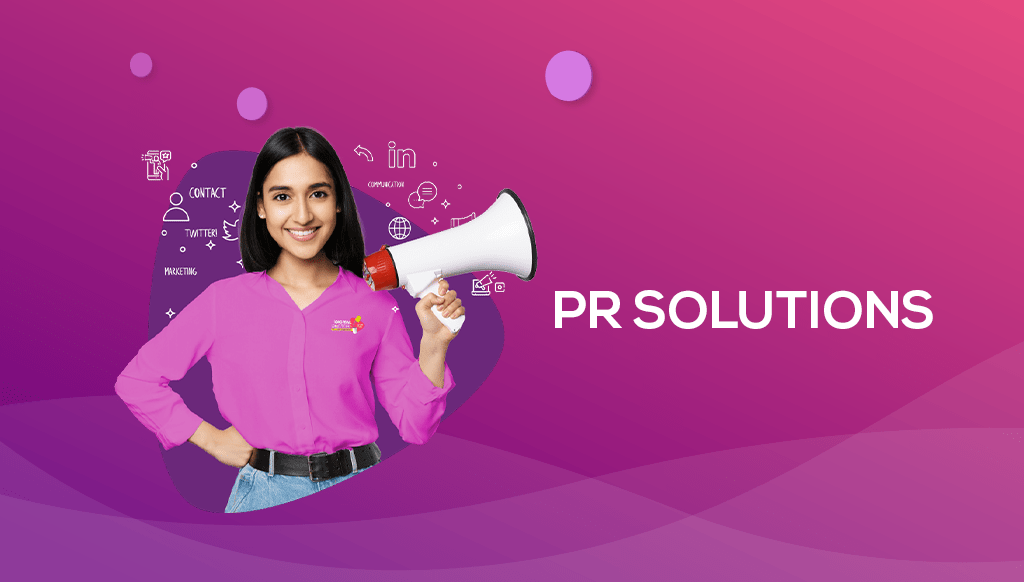
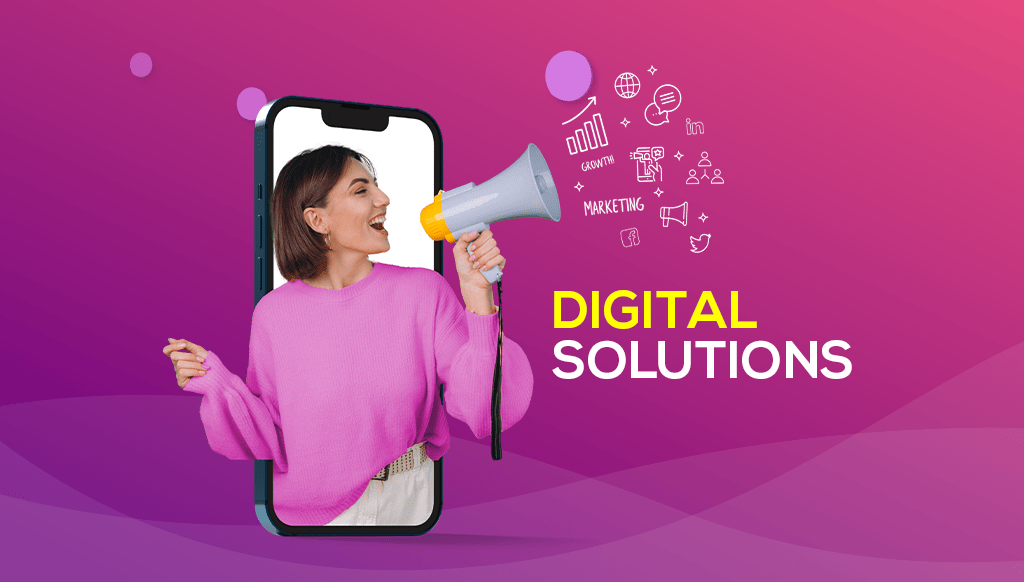
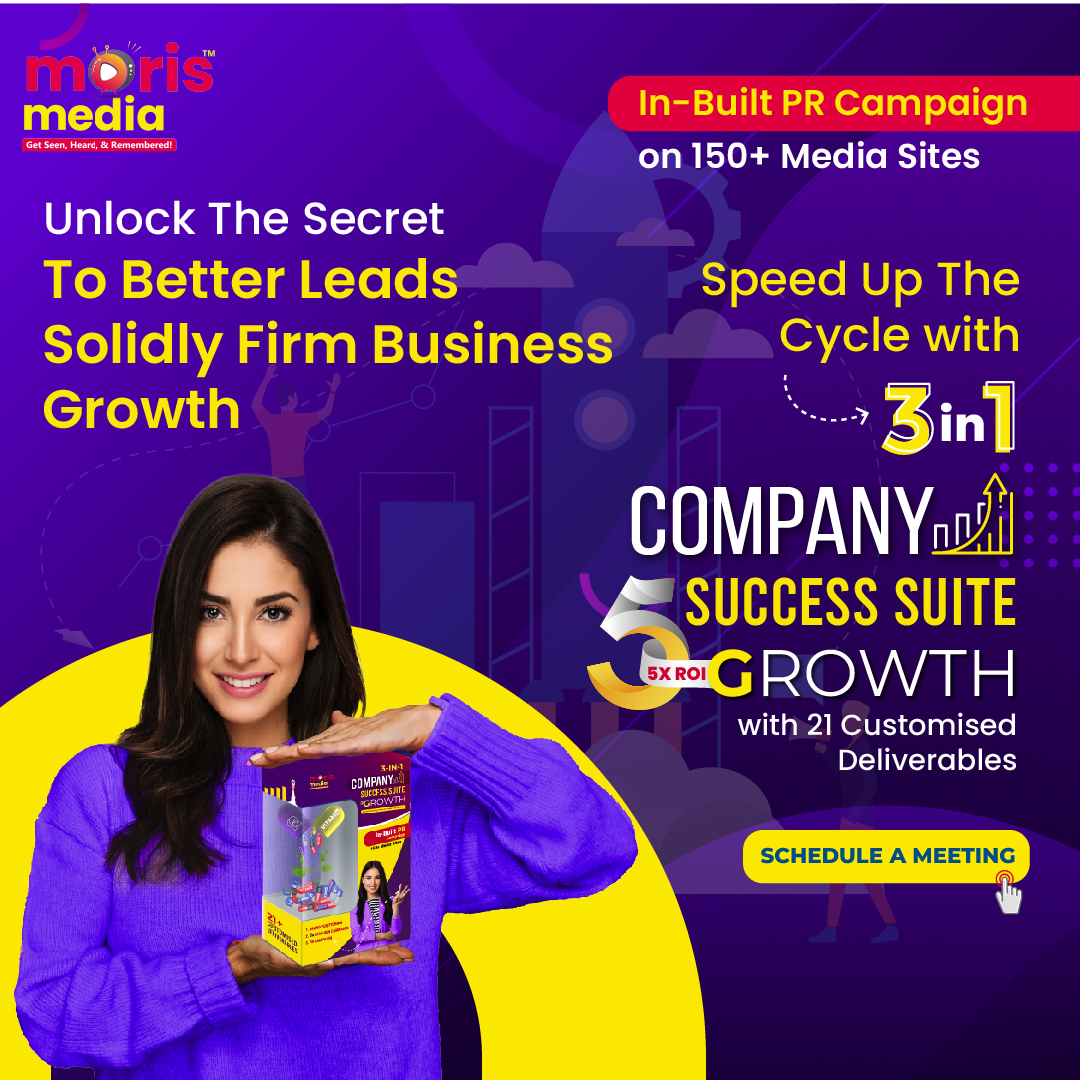

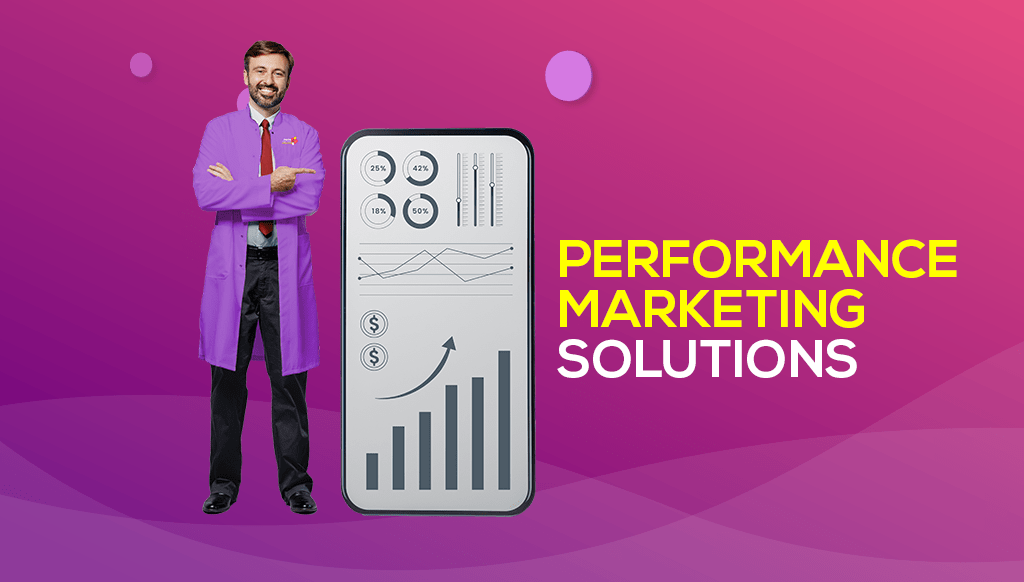
.png?v=1676960503)
